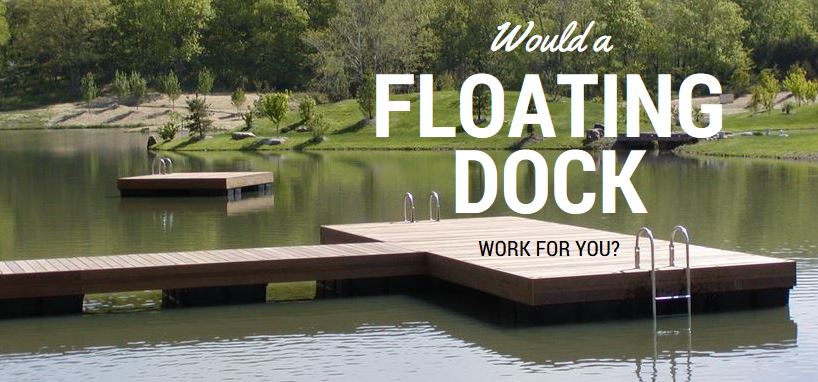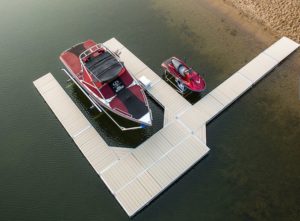
Floating docks are ideally suited to lakes where there is a mud bottom, fluctuating water levels or very water deep—but not where there is extreme wave action. They can be left in the water at your lakefront property during winter, provided that they are detached from the shore and towed to a protected area, such as a bay or the leeward side of an island.
Made using foam-filled plastic billets or commercial steel tube floats, this type of dock is available in a variety of widths and shapes but its stability (which is determined by its length and width) must be taken into account. For example, in an area with lots of waves or boat wake, a wider dock would be required. The weight of a commercial steel tube float would also be beneficial to use in these conditions as their weight and rigidity help to keep them from bouncing around.
in a variety of widths and shapes but its stability (which is determined by its length and width) must be taken into account. For example, in an area with lots of waves or boat wake, a wider dock would be required. The weight of a commercial steel tube float would also be beneficial to use in these conditions as their weight and rigidity help to keep them from bouncing around.
In addition, it’s best to avoid the Styrofoam-filled billets (unless they are fully encased) as the muskrats and mink love to nest in them. (Also avoid using any floatation that is not foam-filled as even a small hole could cause your dock to sink.) Floating docks, when properly constructed, are normally more costly than pipe docks.
If you’re in an area where the water rises and falls, you pretty much have to go with either a pipe dock (with a wheel kit) or a floating dock. If your beach area is also shallow, it is possible to combine a pipe dock followed by a ramp, then a floating dock. The only thing to consider with this configuration is that the ramp must be long enough to accommodate the drop in the water level so that the angle of the ramp is not too steep to walk on.
Posted by Scott Freerksen “The Lake Guy”
